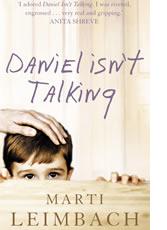
Liverpool University’s new Child Language Study Centre hopes to become the first UK-based lab to replicate and expand upon American findings published in the 90’s that led to the ‘syntactic bootstrapping’ hypothesis – the idea that children as young as two use their innate understanding of syntax to help them learn new words.
With a team of six researchers led by Professor Julian Pine, the Centre is one of the largest of its kind in the UK. And after launching last Summer, the centre is now ready to start experimenting.
“In essence the syntactic bootstrapping hypothesis assumes the child has an innate predisposition to understand the syntactic properties of language. We want to know if this is true or not”, Dr. Javier Aguado-Orea, a researcher in the lab, told Mind Hacks.
In one study, the researchers will present young children with sentences containing an unfamiliar verb (e.g. ‘the boy strokes the girl’). Either side of the speaker playing the pre-recorded sentences will be two video screens showing a boy and girl, with one of them matching the action described in the spoken sentence. In this example, the structure of the sentence reveals the boy as the active player and the researchers want to know if the children can use that information to guide them to look at the correct video screen, thus facilitating their learning of the meaning of the verb ‘to stroke’.
“It can be tricky, for six months we’ve been piloting our stimuli – for example, you have to make sure that the child is looking at the correct screen based on the structure of the sentence, not because one of the characters or objects is more attractive to them”, Aguado-Orea explained.
“But if we are able to replicate this finding it would be quite powerful because it would be an indication of a very early stage in the development of language, and it would illustrate learning mechanisms that there is no other way, in our knowledge, to detect” he said.
The Centre have tested 11 children on this particular experiment so far, but they need at least 12 more. Parents willing to volunteer their child should email childlanguage[@]liv.ac.uk for further information.
—
Link to lab.
 The complete works of Charles Darwin are being published online, free for anyone to read and search. Among his many works, perhaps the one of most interest to Mind Hacks readers will be
The complete works of Charles Darwin are being published online, free for anyone to read and search. Among his many works, perhaps the one of most interest to Mind Hacks readers will be  ‘The God Delusion’, Richard Dawkins’ forthcoming book on religion, is “incurious, dogmatic, rambling and self-contradictory” according to Andrew Brown (author of the Darwin Wars), writing in Prospect magazine.
‘The God Delusion’, Richard Dawkins’ forthcoming book on religion, is “incurious, dogmatic, rambling and self-contradictory” according to Andrew Brown (author of the Darwin Wars), writing in Prospect magazine.
 The latest news reports of
The latest news reports of  One of the pioneers of biological psychiatry, Professor Joseph Schildkraut, died recently, aged 72.
One of the pioneers of biological psychiatry, Professor Joseph Schildkraut, died recently, aged 72.  Don’t worry, this isn’t about telepathy and doesn’t involve Uri Gellar.
Don’t worry, this isn’t about telepathy and doesn’t involve Uri Gellar.  The latest issue of Prospect magazine features
The latest issue of Prospect magazine features 
 Psychologist
Psychologist 
 By combining a hand-held global positioning system with a galvanic skin response sensor (that measures the sweatiness of your fingers), London-based artist Christian Nold has created a gadget that measures your arousal as you walk around. Superimposing the data onto your route, using something like Google Earth, allows you to see a kind of
By combining a hand-held global positioning system with a galvanic skin response sensor (that measures the sweatiness of your fingers), London-based artist Christian Nold has created a gadget that measures your arousal as you walk around. Superimposing the data onto your route, using something like Google Earth, allows you to see a kind of